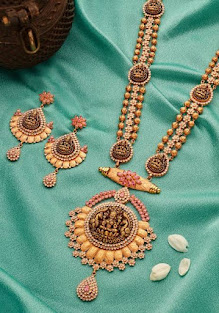Jewellery
Introduction to Jewellery
Jewellery refers to decorative items worn for personal adornment, such as necklaces, rings, earrings, bracelets, and brooches. Made from a wide range of materials—including precious metals like gold, silver, and platinum, as well as gemstones, beads, and other natural elements—jewellery has been used across cultures for thousands of years.
Historically, jewellery has served many purposes: as a symbol of status and wealth, a display of cultural identity, a form of artistic expression, and even as a talisman or protective charm. In modern times, while it continues to hold symbolic and emotional significance (such as engagement rings or religious pendants), it is also an important element of fashion and personal style.
Jewellery is a form of personal adornment that has been used by humans for thousands of years. It includes items such as rings, necklaces, bracelets, earrings, and brooches, and can be made from a variety of materials like gold, silver, platinum, gemstones (such as diamonds, rubies, emeralds), pearls, beads, and even modern synthetic materials.
Purposes of Jewellery:
Adornment
Cultural Significance
Symbolism
Wealth & Status
Spiritual or Protective Use
Jewellery design ranges from simple and minimalist to highly intricate and artistic. Today, it is not only a craft but also a major industry blending art, fashion, culture, and technology.
Conclusion :
Jewellery is more than just decoration—it is a powerful form of self-expression, cultural identity, and historical significance. Across time and civilizations, it has held deep meaning, whether as a symbol of love, status, tradition, or protection. Today, jewellery continues to evolve, blending traditional craftsmanship with modern design to remain a timeless and cherished part of human life.




Comments
Post a Comment